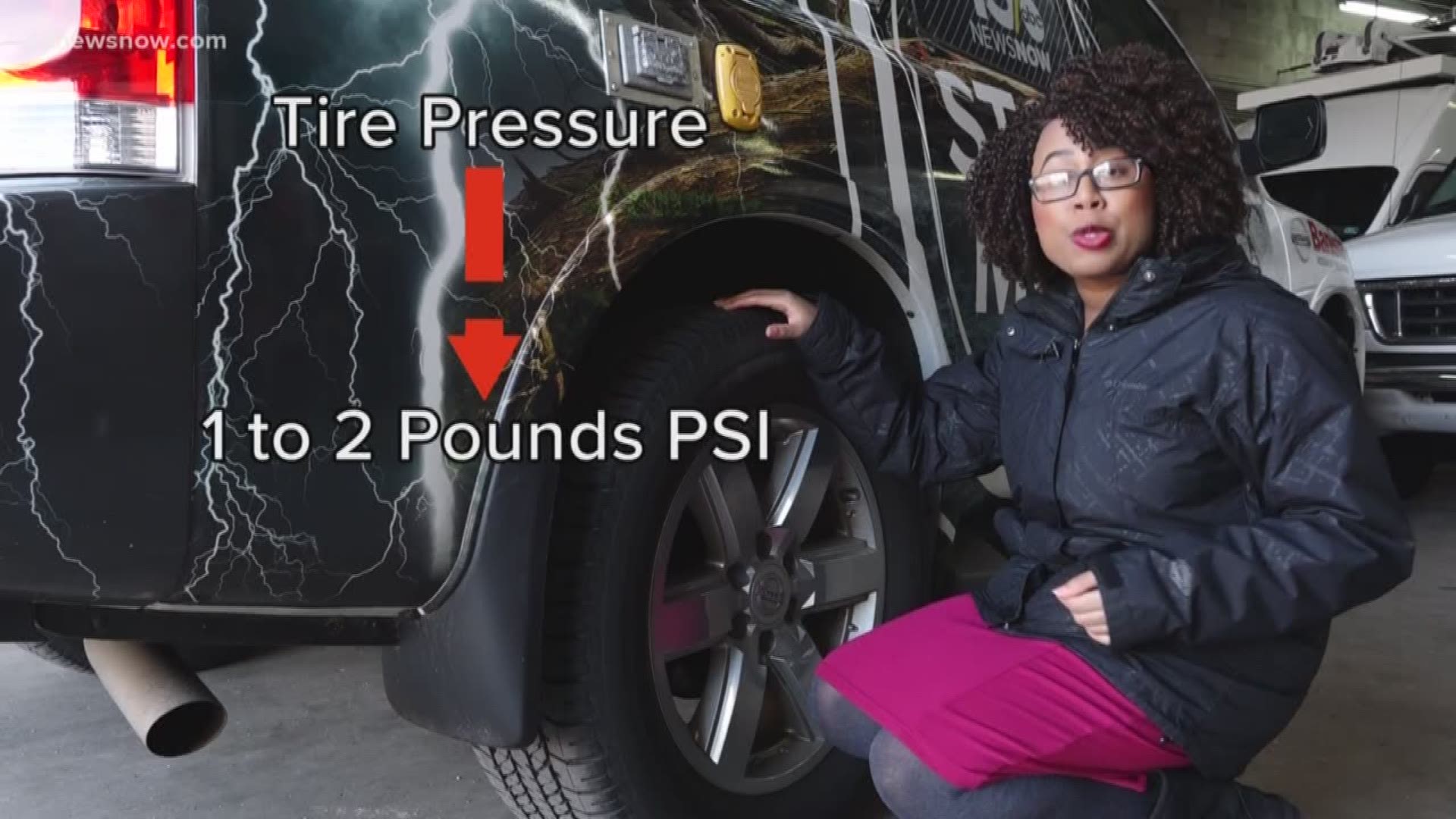NORFOLK, Va. — Typically, January and early February are the coldest times of the year in Hampton Roads. When the temps cool in the fall and winter, it means more than seat heaters and warm drinks in the cupholder.
Those chilly temps can take a toll on your vehicle - it doesn't matter if you travel by car, truck or bus.
Temperature and pressure go hand in hand. There’s this equation called the “ideal gas law” that explains it (pv = nrt).
P stands for pressure - and t stands for temperature.
Forget about the math behind it for a minute.
What you need to know is when the temps cool, pressure decreases – and that goes for your tires, as well! Actually, for every 10°F the temperatures fall, tire pressure can drop between 1-2 pounds per square inch. The reverse is true when warmer air moves back in for spring and summer.
Running on low tires also affects gas mileage and could increase blowout risk so make sure you’re keeping an eye on that this winter.
RELATED: SCIENCE BEHIND: Retrograde motion
RELATED: SCIENCE BEHIND: Meteor Showers

